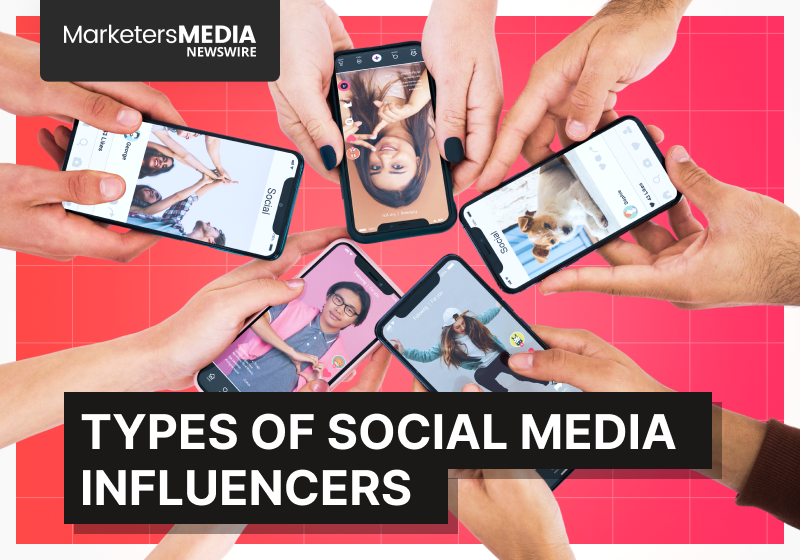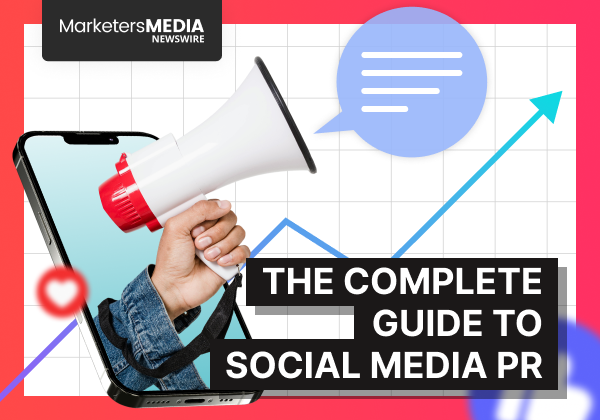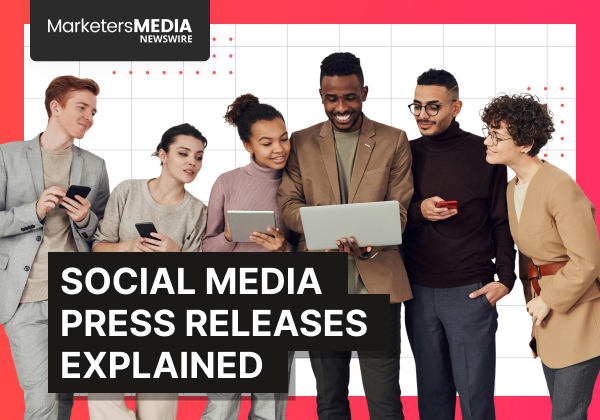Influencer marketing connects brands with people who already have an audience.
It’s a modern take on word-of-mouth, except instead of your friend texting you about a great sunscreen, it’s someone with 50,000 followers showing it off in their morning routine on Instagram.
And it’s not slowing down. According to Influencer Marketing Hub’s 2025 report, the industry is expected to hit $24 billion by the end of the year.
What’s interesting is, it’s not all big-name celebrities anymore. Some of the best results come from creators with smaller followings — because their audience actually listens.
These folks aren’t famous. They’re relatable, consistent, and most importantly, trusted. And that trust is what makes their recommendations land.
From skincare demos on TikTok to finance tips in a YouTube Short, influencers are shaping what people buy — whether you notice it or not.
But before you start throwing free products at anyone with a blue check, it helps to know who’s who — and which type of influencer actually fits your brand.
Types of Social Media Influencers
Let’s break it down by follower size. This is the most common way influencers are categorized, and it gives you a quick idea of how wide their reach is — and how close their connection is with their audience.
- Mega Influencers (1M+ followers)
- Macro Influencers (100K–1M followers)
- Micro Influencers (10K–100K followers)
- Nano Influencers (Under 10K followers)
Mega Influencers (1M+ followers)
These are the big leagues. Think celebrities, reality TV stars, and internet-famous personalities with millions of followers.
Tennis champion Naomi Osaka, for example, has partnered with brands like Beats by Dre, showcasing how music and performance intertwine as part of her personal lifestyle shared with millions of fans.
Mega influencers are ideal for major brand awareness pushes, product launches, or big global campaigns.
Of course, big reach comes with a big budget. Expect six-figure fees — and lower engagement rates compared to smaller creators.
Why brands work with them:
- Massive reach in a single post
- Professional content production
- Ideal for top-of-funnel awareness campaigns
If your campaign goal is visibility and you’ve got the budget, mega influencers can deliver results that turn heads — both online and in the media.
Macro Influencers (100K–1M followers)
Macro influencers usually started as everyday creators — the kind who just kept posting, stayed consistent, and grew.
Now they’ve built big audiences that go beyond a single niche, but they’re not quite at celebrity status.
That gives them a sweet spot: big enough for reach, but still somewhat relatable.
They’re often seen as topic authorities — think tech reviewers, beauty creators, or wellness coaches with large followings and polished content.
For example, @mikirai, a lifestyle and beauty creator with over 860K followers, featured ESW Beauty’s eye patches in a “Get unready with me” video — a typical macro influencer format where products are shown as part of a daily routine.
- Big enough to build awareness at scale
- Still connected enough to feel personal
- Often ideal for product walk-throughs or deeper content
They’re also more affordable than mega influencers — but still a real investment. Rates can range from a few thousand to tens of thousands per post, depending on exact following and engagement rates.
Macro influencers shine for:
- Building awareness within specific audience segments
- Promoting products that benefit from detailed explanations
- Companies with moderate marketing budgets seeking broad reach
Micro Influencers (10K–100K followers)
Micro influencers sit right in the middle — not too big, not too small.
They’ve built engaged communities around specific interests, whether that’s skincare routines, budget travel tips, or even... Shih Tzus.
One example is @blondeandtzus, who partnered with @taglabuk to promote NFC pet tags. The post blends product use with light humor — exactly the kind of authentic content that works in niche communities.
When it comes to micro vs macro influencers, many brands find micro creators deliver stronger engagement and more meaningful interactions — especially for products that benefit from personal storytelling or word-of-mouth credibility.
They’re seen less like media channels and more like helpful voices. Their posts often spark real conversations, which is why their engagement rates tend to beat out bigger names.
Why brands work with them:
- High engagement and authentic content
- Deep connection with niche audiences
- Great for showing how a product fits into real life
Rates can range from a few hundred to a few thousand dollars, depending on the creator.
Some might still accept product-only collaborations, but that’s getting less common as the space matures.
Nano Influencers (Under 10K followers)
Nano influencers have the smallest followings but often the strongest connections.
These content creators might have just a few thousand followers, but those followers trust them like close friends.
Their recommendations carry significant weight because they're seen as everyday people sharing honest opinions. When a nano influencer promotes something, their audience often views it as a genuine tip from someone they know rather than a paid advertisement.
For example, @hellowws, a landscape photographer partnered with @oxwhiteofficial to promote a men’s open collar tee. The post focused on comfort and practicality for outdoor shooting — a real use case that resonated with his followers.
Nano influencers work particularly well for:
- Local businesses targeting specific communities
- Startups and small businesses with limited marketing budgets
- Products that benefit from highly targeted audience segments
- Building authentic word-of-mouth marketing
Rates are usually low (some even work in exchange for free products), and they often reply to comments or messages directly, helping create real conversations around your brand.
Now you know the types — but how do you decide who to actually work with?
Not all influencers are a good fit for every campaign — even if their numbers look impressive.
Choosing the right one means two things:
- Matching the type of influencer to your campaign goals
- Choosing the right person to represent your brand
Let’s walk through both.
How to Choose the Right Type of Influencer for Your Brand
Part 1: Match Goals to Influencer Type
Start with what you want out of the campaign. Most goals fall into one of three buckets:
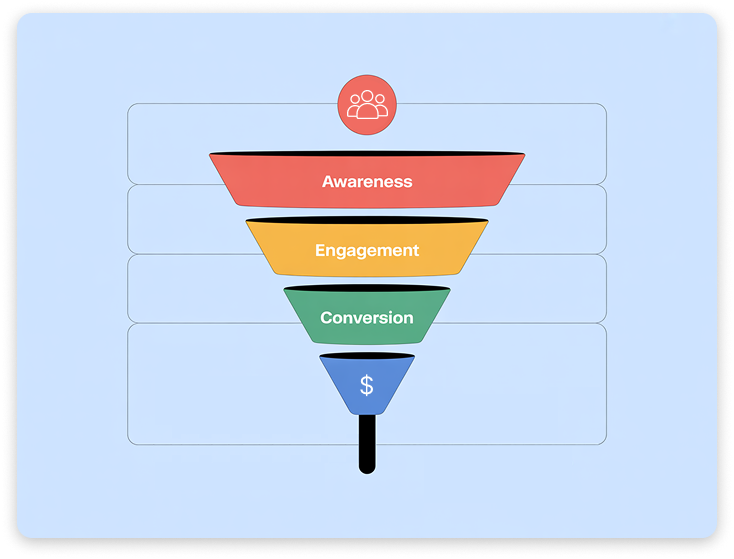
Top of Funnel (TOFU) – Awareness
You want people to discover your brand.
- Go with: Mega or Macro influencers
- Best for: Product launches, giveaways, broad reach campaigns
- Look at: Views, impressions, follower growth, brand mentions
Middle of Funnel (MOFU) – Engagement
You want to stay on people’s radar and build trust.
- Go with: Micro influencers
- Best for: Tutorials, testimonials, relatable storytelling
- Look at: Comments, shares, saves, social engagement
Bottom of Funnel (BOFU) – Conversion
You want people to take action, like clicking a link or buying something.
- Go with: Micro or Nano influencers
- Best for: Promo codes, product demos, affiliate links
- Look at: Clicks, sales, sign-ups, inquiries
Part 2: Steps to Find the Right Individual Influencer
Once you know what kind of influencer you’re looking for, here’s how to narrow it down to the right person.
Step 1: Understand your audience
Who are you trying to reach — and where do they spend time? Are they scrolling TikTok? Watching YouTube reviews? Checking Instagram for product recs? Go where they already are.
Step 2: Look at their content
Don’t just look at numbers. Scroll through the influencer’s past posts. Does their style match your brand? Would your product fit naturally into their feed?
Step 3: Check their engagement
High follower counts can be misleading. Focus on engagement: comments, shares, saves, and how often they respond to their audience. Real influence is about trust and connection — not just reach.
Step 4: Review past partnerships
See if they’ve worked with other brands. Look at how those posts performed and how well the sponsored content blended into their usual style. If they’ve worked in your niche before, even better.
Step 5: Align expectations
Before you commit, make sure you’re on the same page about what’s being delivered — from the type of content to the timeline and budget. A quick conversation up front saves a lot of headaches later.
Step 6: Track the results
Once the campaign is live, pay attention to what’s working. Are people clicking? Commenting? Buying? Use those insights to refine your approach next time.
Bonus Tip: Use What You’ve Got
If you’re working with a smaller budget, start by looking at influencers who are already talking about your product or niche. A simple DM can go a long way.
Industry-Specific Influencers: How Content Varies Across Niches
Influencers don’t just differ by follower count — they also vary by what they talk about and how they create content.
A beauty creator’s video isn’t going to look anything like a finance explainer or a parenting tip reel.
That’s why brands need to think not just about who has reach, but also about what kind of content fits naturally into each industry.
Let's look at how influencer marketing plays out across different niches:
- Fashion & Beauty Influencers
- Tech & Gadget Reviewers
- Fitness & Health Influencers
- Food & Cooking Influencers
- Parenting Influencers
- Travel Influencers
- Finance & Business Influencers
Fashion & Beauty Influencers
These are probably what most people think of when they hear "influencer." And there's a reason they dominate the space.
Fashion and beauty products are visual by nature — perfect for platforms like Instagram and TikTok. Plus, they benefit from being shown in action.
What works here:
- "Get ready with me" videos that naturally incorporate products
- Side-by-side comparisons (especially for makeup and skincare)
- Styling videos that show one product used multiple ways
For example, @daniellemarcan blends product tips into her fast-paced makeup tutorials on TikTok — mixing brand mentions with real techniques in a way that feels casual but polished.
Loading...
Beauty brands especially love these partnerships because seeing someone apply a product answers questions that product descriptions can't.
Is the foundation actually full coverage? Does the dress look different in real lighting? Influencers answer these questions.
Tech & Gadget Reviewers
Tech influencers have massive sway over purchase decisions. Their audiences often rely on them before clicking “Add to Cart.”
What makes them different is depth. Their content is often longer, more detailed, and focused on performance rather than aesthetics.
What works here:
- Unboxing and hands-on demos
- Comparison videos between competing products
- Long-term reviews after weeks of use
@UrAvgConsumer does exactly this on YouTube — walking through devices, testing them in real-life setups, and slipping in sponsor mentions without losing trust.
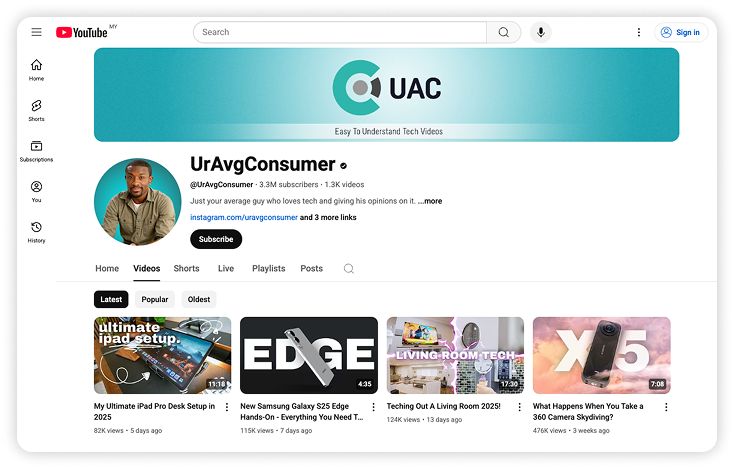
Tech audiences value clarity, honesty, and practicality — and top tech creators deliver that with consistency.
Fitness & Health Influencers
Fitness influencers don’t just show off gear — they live in it. Their content is often built around routines, motivation, and practical tips.
What works here:
- Workout clips with branded gear
- Day-in-the-life wellness content
- Challenges with product integration
Fitness creator @jordanyeohfitness is a great example — he blends workout tips with occasional product partnerships. His credibility comes from consistent posting and visible personal discipline, which makes his sponsored mentions feel like authentic recommendations.
Food & Cooking Influencers
Food content creators have perfected the art of making you hungry. But they also offer real utility, like recipes people bookmark and come back to.
What works here:
- Recipe videos that feature brand ingredients
- Kitchen tool demo and unboxing
- Tips for substitutions, prep hacks, or meal planning
@nutritionbykylie, a registered dietitian, combines cooking and science-backed education in short-form videos. Her tone is warm and informative, and she often features ingredients or food products in a way that feels like friendly advice rather than a pitch.
The magic of food influencers is that their content lives on — as screenshots, saved Reels, or actual meals being cooked at home.
Parenting Influencers
Parenting influencers have some of the most engaged audiences out there.
Why? Because their recommendations aren't just about preference — they're about safety, development, and making parenting easier.
What works here:
- Toy reviews and playtime demos
- Routines with parenting tips
- DIY and learning activities
@mothercould, for instance, shares DIY learning activities and practical toy recommendations — often in collaboration with education-focused brands. Her content feels hands-on and useful, not staged or promotional, which is why parents trust her.
Parents trust other parents more than they trust brands. They want to see products surviving real-life chaos, not just staged photoshoots.
Travel Influencers
Travel content is aspirational. It sells experiences, not just products — which creates unique partnership opportunities.
What works here:
- Destination features for tourism boards
- Packing videos for luggage and travel gear brands
- Hotel and resort tours that showcase amenities
Travel YouTuber @CurrentlyHannah is known for blending cinematic storytelling with cultural tips and personal travel experiences. Whether she’s showing what to pack for a hike or highlighting a new city, the content invites followers into the moment while spotlighting brand partners organically.
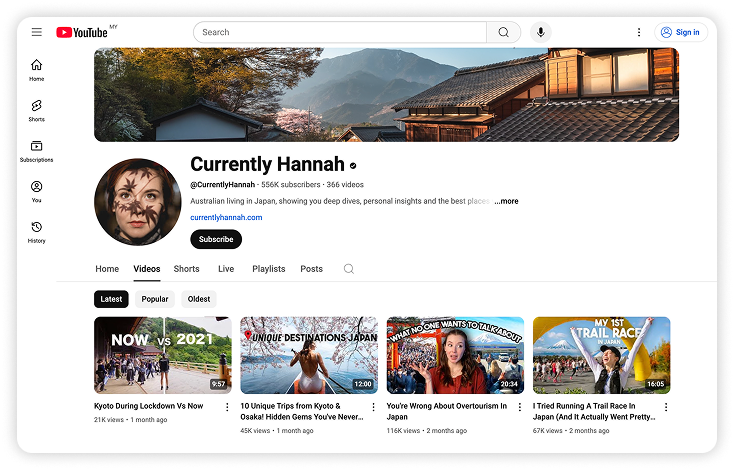
Travel influencers excel at storytelling. Their content isn't just about places and products — it's about adventures and memories, which creates emotional connections that standard ads can't match.
Finance & Business Influencers
This category has exploded in recent years. Finance influencers break down complex topics into digestible content that actually gets people excited about money management.
What works here:
- Tool demonstrations (apps, planners, software)
- Explainer content that positions brands as solutions
- Real stories about money wins and mistakes
Singapore-based @thewokesalaryman is a standout in this space — using comics to explain financial and work-life concepts in a highly relatable way. When they collaborate with a brand, the story always comes first, and the message never feels forced.
What's unique about finance influencers is they're often teaching, not just showing. This positions them as trusted advisors rather than just entertainers.
The right industry match matters as much as follower count. A beauty brand might see better results from a beauty micro-influencer with 20K followers than a general lifestyle mega-influencer with 2 million who doesn't normally talk about beauty products.
When you're planning your strategy, look for influencers who already talk about similar products or topics — their recommendations will feel natural, not forced.
Wrapping Things Up
The right influencer type depends on your specific goals, budget, and target audience.
While mega influencers offer maximum visibility, smaller influencers often deliver better engagement and conversion rates at lower costs.
Many successful campaigns use a strategic mix of different influencer types to accomplish different objectives.
Want to learn more about reaching your audience online? Check out our comprehensive guide to types of digital marketing here.
Free Press Release Template
Tell us where to send your PDF:
